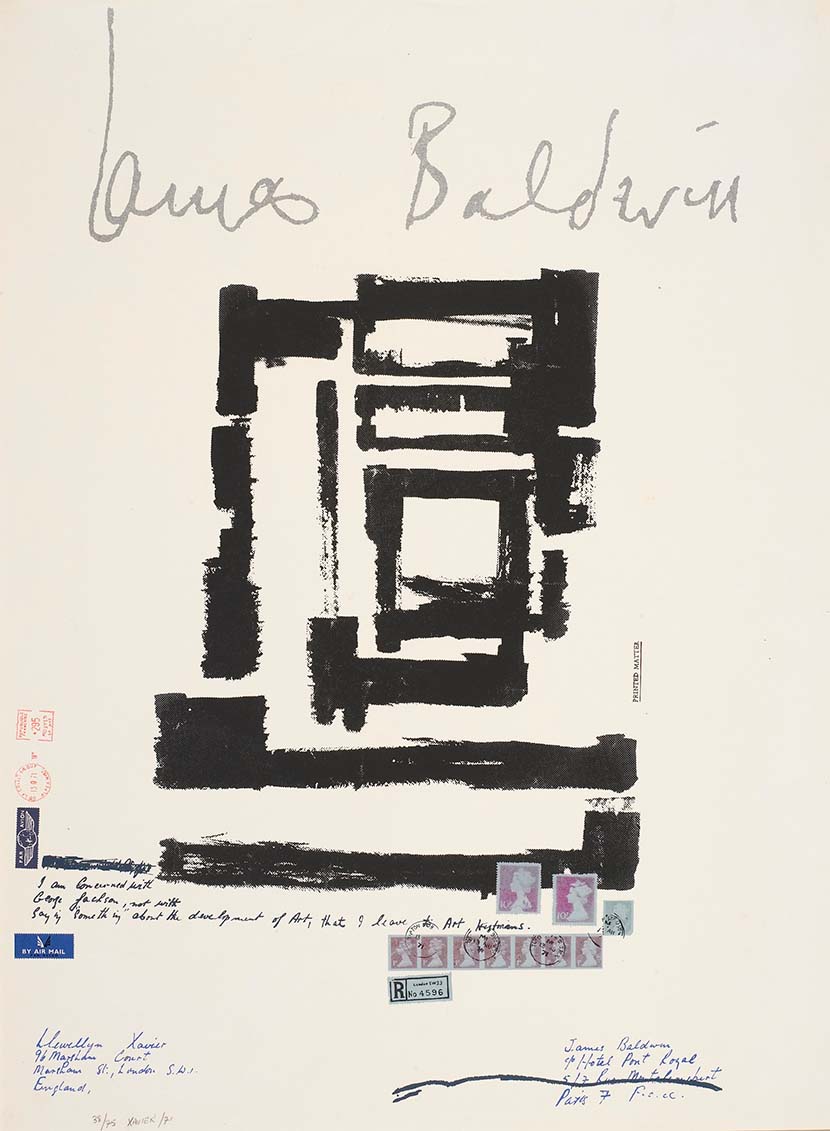
Activism through Art: Lewellyn Xavier's artworks on George Jackson
Ann Bukantas, Head of Fine Art at National Museums of Liverpool, spoke to artist Llewellyn Xavier, OBE, about six works he donated to the Walker Art Gallery in 2006. Xavier explains how he came to make the works inspired by the American activist George Jackson and the connection to John Lennon that prompted him to donate the works to the Walker Art Gallery.
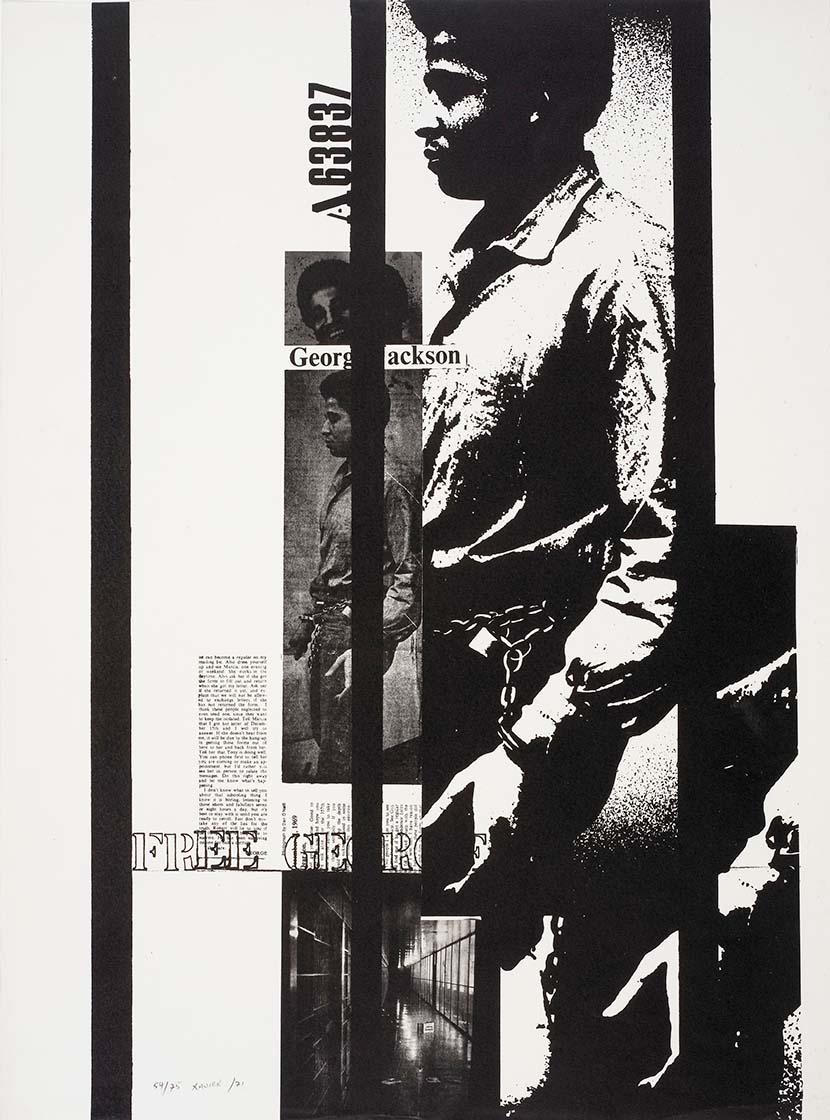
In 2006, the influential St Lucian artist Llewellyn Xavier, OBE, donated six of his pioneering, early screenprints to the Walker Art Gallery. The prints reflect his response to the racial discrimination he experienced in the London of the late 1960s and early 1970s. They are also a manifestation of his reaction to the contemporary story of the American Black activist George Jackson, who was incarcerated in California and later killed in prison, and who became a hero for the Black Power Movement.
Xavier explains that John Lennon’s connection with Liverpool was behind his decision to donate the prints to the Gallery:
I decided to make the gift, because of John Lennon, as you probably know, he contributed to the work.

Xavier was born in St Lucia in the Caribbean in 1945. He grew up in poverty, and his first encounter with art came at the age of 17 whilst he was working in agriculture in Barbados, with the gift of a box of paints from a flatmate. His early works focused on the beauty he saw in the natural world around him, but his focus would soon change to that of political and environmental protest.
Xavier first visited England in the summer of 1968 and in 1970, he started living between England and Barbados. He recalls: “Racism was rife in England, as indeed, it was in the USA, Canada, and Europe…In England…it was intolerable. The only reaction was absolute rage. Racism against people of African descent is universal, only in varying degrees.” Xavier adds: “When I first visited England, the very first thing that smacked me bang in the face was the level of hatred that existed in England against people of colour.”
It was against this backdrop that Xavier became one of the UK-based artists who, at the time, made hard-hitting work in response to media stories of police brutality against people of African and South Asian heritage. Xavier turned to real life subjects to highlight incidents of injustice, racism, abuse and murder. One of these was the unfolding story of George Jackson (1941-71), who was serving an indeterminate ‘one year to life’ sentence for a $70 armed robbery in 1961. Initially in San Quentin, Jackson was later transferred to California’s notorious Soledad prison. During his time in prison, he studied political economy and radical theory and became involved in revolutionary activity. He also wrote many letters to friends and supporters. These were published in his 1970 book, ‘Soledad Brother’. The book is a condemnation of racism in white America and the brutality that he faced as a Black man within its prison system. Jackson was shot dead in 1971 for allegedly trying to escape.
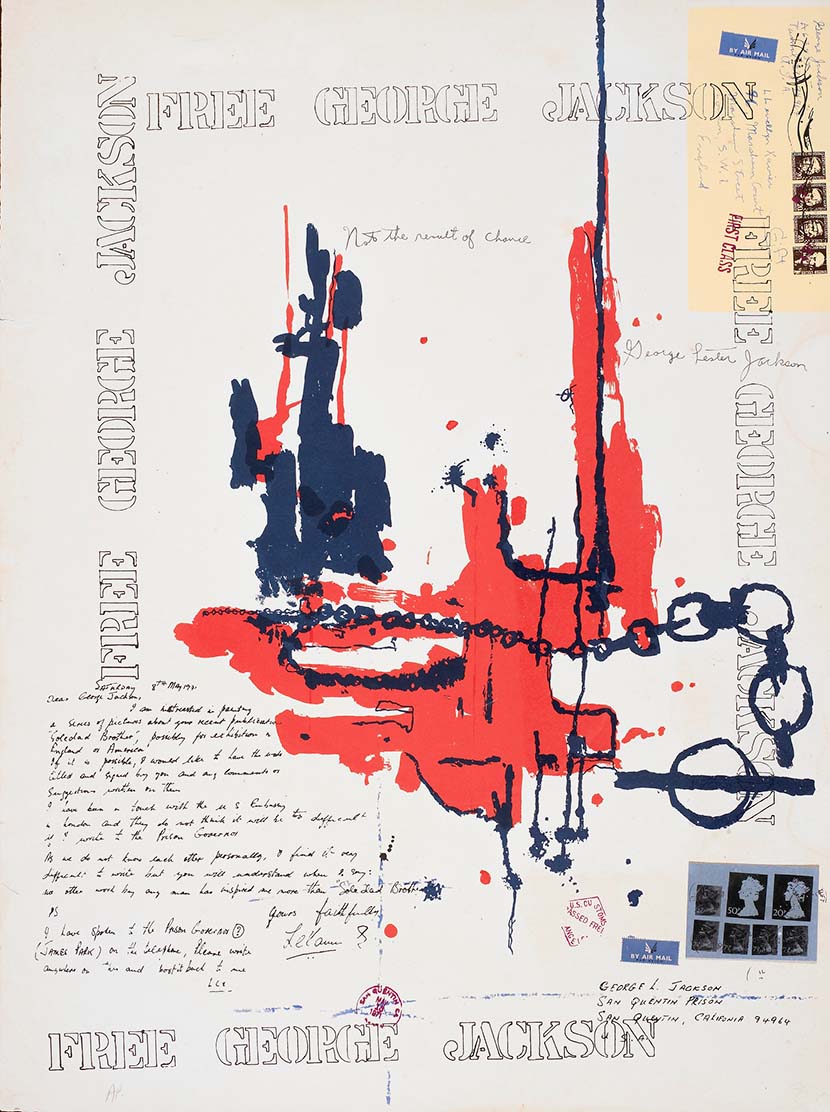
After reading ‘Soledad Brother’ Xavier was moved to produce a series of works based on Jackson's life, in an act of protest and in contribution to calls for his release. He turned to mail art as the starting point for the series. Mail art came to prominence in the 1960s, when artists used the postal service, telegrams or fax machines to send and exchange usually small-scale artworks or poetry, enabling them to bypass the commercial gallery world and create art that could evolve as it continued its journey through the system. The incorporation of markings such as postal franking marks and postage stamps become a characteristic part of these artworks. Xavier valued the marks, which also included censorship stamps, as what he described as “contributions” to the work, an enhancement of his photomontage style that characterises the larger-scale screenprints. In playing an important role in the early evolution of this type of artistic practice, Xavier became one of the artists whose campaigning work laid the foundation for the generation that followed.
Xavier created a series of images – the ‘George Jackson, Soledad Brother’ series – based on Jackson’s life: “An initial image was created, in most cases using photomontage, with pen and brush additions. These were then sent to well-known militants for comments.” They were wrapped on the outside of the postal tubes, receiving the stamps and marks as they travelled. The recipients included the campaigner, and later politician, Peter Hain, John Lennon and Yoko Ono, the American writer and activist James Baldwin and the French writer Jean Genet.
Xavier also wrote to Jackson himself in 1971, and recalled his lengthy correspondence with a prison governor to contact him: “I never met George Jackson. I had tremendous difficulty in communicating with him…I told him [the governor] I had been in touch with the US embassy in England, and finally he was convinced I wasn’t a crackpot.”
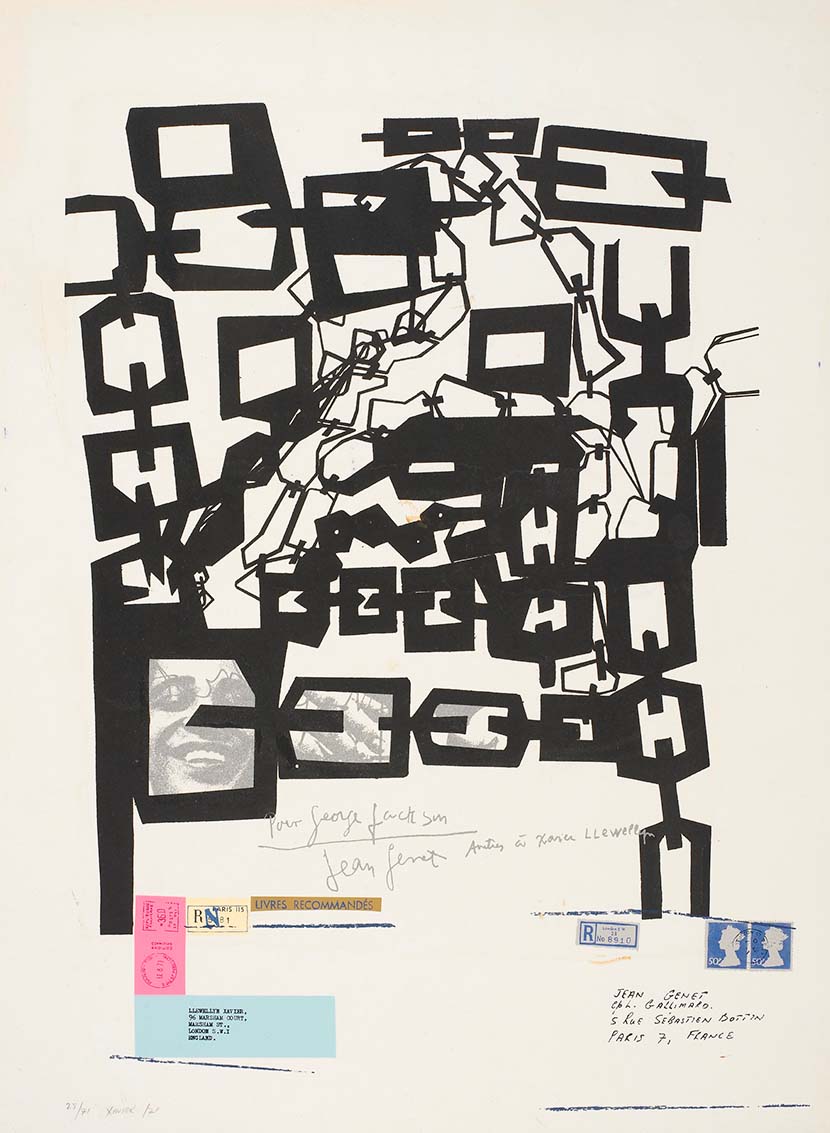
Making this series of 12 works was also a new experience for the artist, who explained to us: “I had never worked with prints prior to making the Jackson prints. The George Jackson series lent itself well to doing the work in a limited edition.” He recalls: “The works were done at Prints Unlimited, in London, under the Direction of Sam Bacolod.”
What are Xavier’s recollections of the contemporary response to the series? “The work had some success. It was first shown at the Museum of Modern Art in New York, and subsequently at various galleries, and was favourably reviewed in the press.” Larry Herman was to write in the New Statesman: ‘In his work Xavier manages to combine his struggle to bring the case to the public’s attention and the horrific nature of Jackson’s imprisonment. The end result is that the artist’s political struggle emerges as both an act of brilliant polemic and challenging aestheticism.’
In addition to the series on George Jackson, Xavier produced works called ‘Race and Sex’ as well as another based on the life of the actor Paul Robeson, all of which lifted him to prominence in the Black Arts activism of the 1970s.
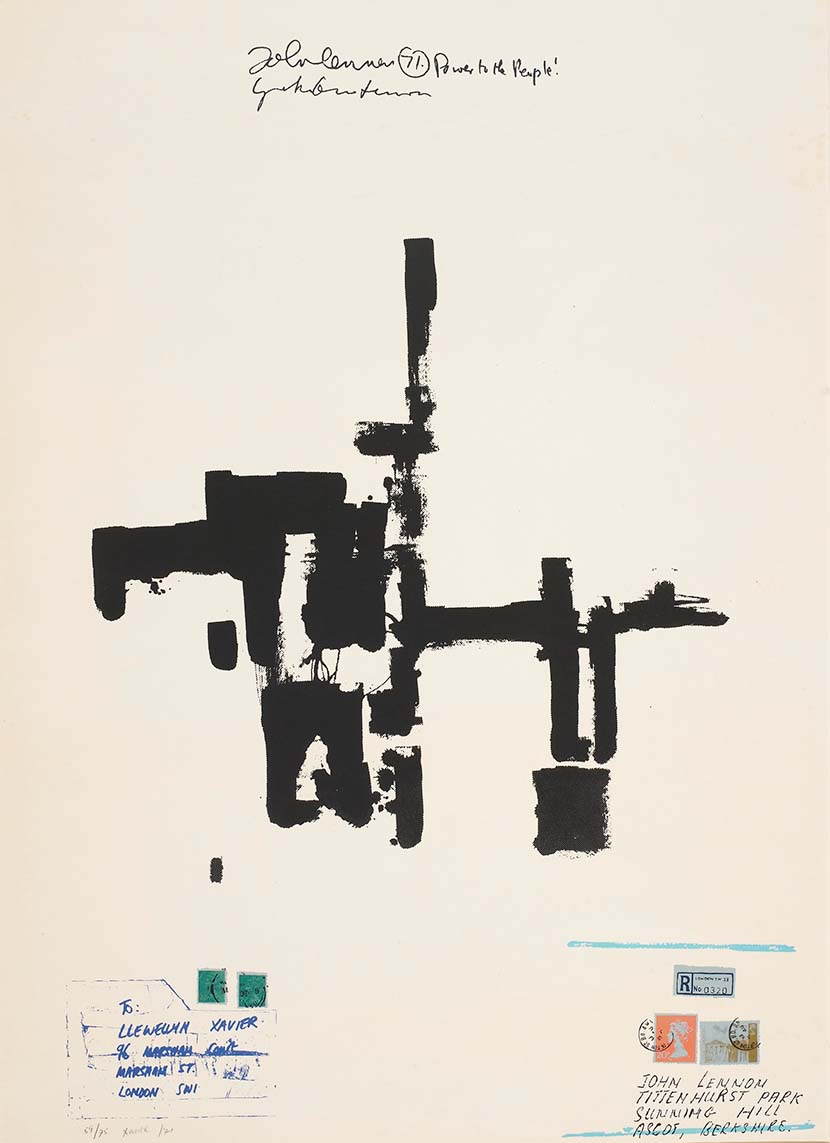
Following this pivotal time in his life, Xavier studied at the school of the Museum of Fine Arts in Boston, before spending a substantial period of time as a monk. He gave up the monastic life to marry, and ultimately returned to St Lucia. It was there that the fragility of the island’s environment and ecology became his passion, driving him to campaign against its destruction but also using his art to draw widespread awareness to the cause. The mail art techniques he had used early in his career came to the fore once more, in a monumental series of collages called ‘The Global Council for the Restoration of the Earth’s Environment’, which he posted worldwide to collect signatures from ecological campaigners like Sir David Bellamy and the mountaineer Sir Chris Bonington. Through a variety of techniques, and especially through his vivid, life-filled oil paintings, Xavier has continued to hold these themes as central to his work and, in 2004, he was awarded the OBE in recognition of his contributions to the art of the Commonwealth.
We asked the artist for his advice to anyone wanting to follow in his footsteps and pursue art as a career: “[My advice] is simple: Just do it. There is absolutely nothing, whatsoever, quite like it.”
Learn more about Xavier's work on his website
